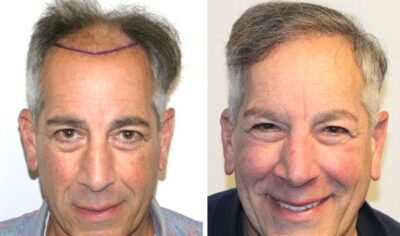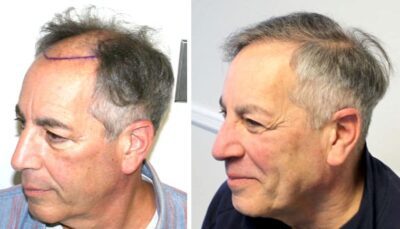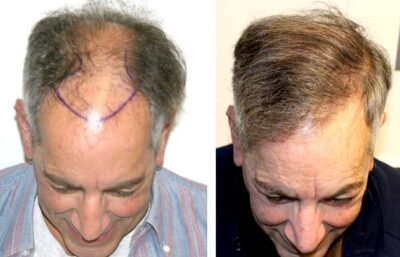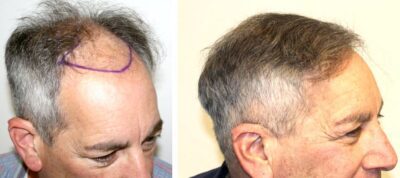Diagnosis: Lots of Hair Loss, Little Available Donor
A hair transplant is truly a “moving” procedure; we take strong, immune, permanent hair follicles from the safe donor area (on the sides and back of the scalp) and move them to the thin and balding regions where the hair has fallen out. After moving the hair, it remains immune to future hair loss and continues to grow indefinitely. If you have a good “supply” of donor follicles on the sides and back of the scalp and a somewhat limited “demand” in the thin and balding regions, we can likely move enough grafts to successfully restore the area. But what happens when the “demand” outweighs the “supply?” What happens when patients have advanced hair loss, but a more limited donor supply compared to the average patient? This is what happened in the case of this patient. He presented with advanced Norwood VI level hair loss, and somewhat sparse and limited donor follicles. In order to effectively address his hair loss, we had to maximize what we could use from the donor by employing the FUT technique and strategically transplant the grafts in the front and mid-scalp regions. While it typically takes 5,000 – 6,000 grafts to restore a Norwood VI patient from “front to back,” we could only remove 2,400 grafts from this patient in one sitting. Using these grafts as strategically as possible, we restored the frontal half of the scalp and worked further through the mid-scalp to maximize coverage with his desired styling. Because we used the FUT technique, the patient did have the option for more surgery in the future if he desired. He returned 12 months later, however, and happily reported that he did not feel the need for more surgery. By strategically transplanting the grafts for maximum coverage, the patient was able to achieve the appearance of a much greater transformation with a smaller number of grafts.









